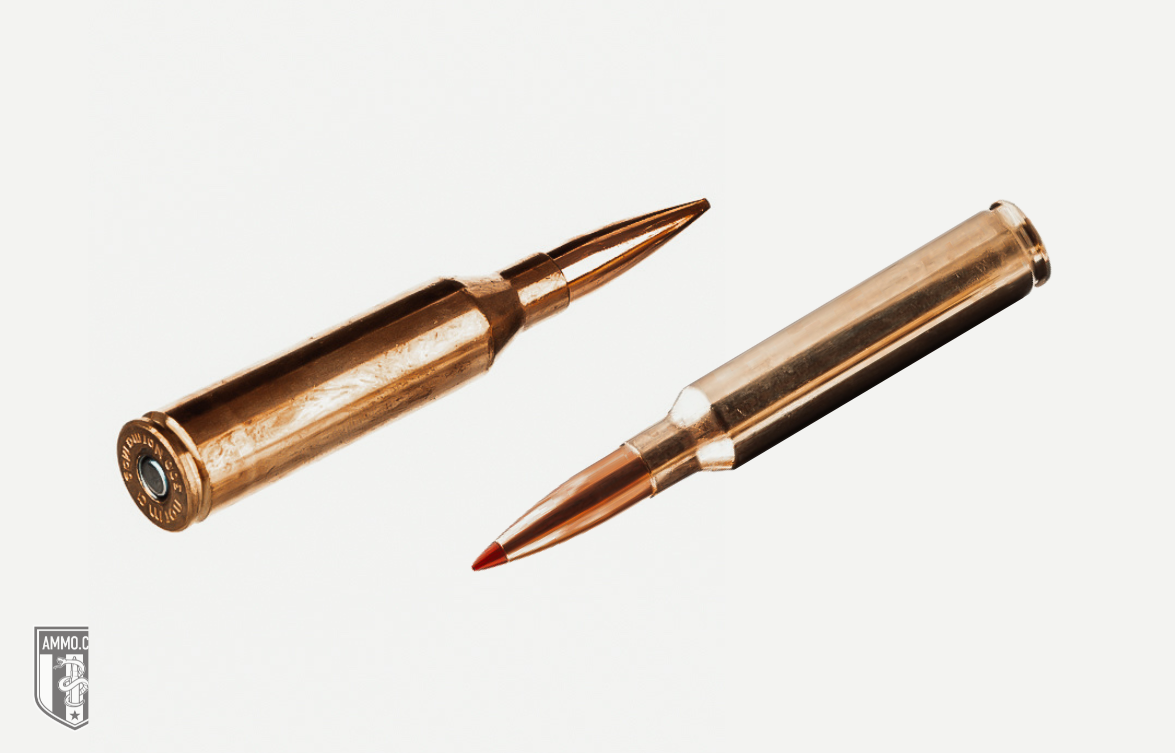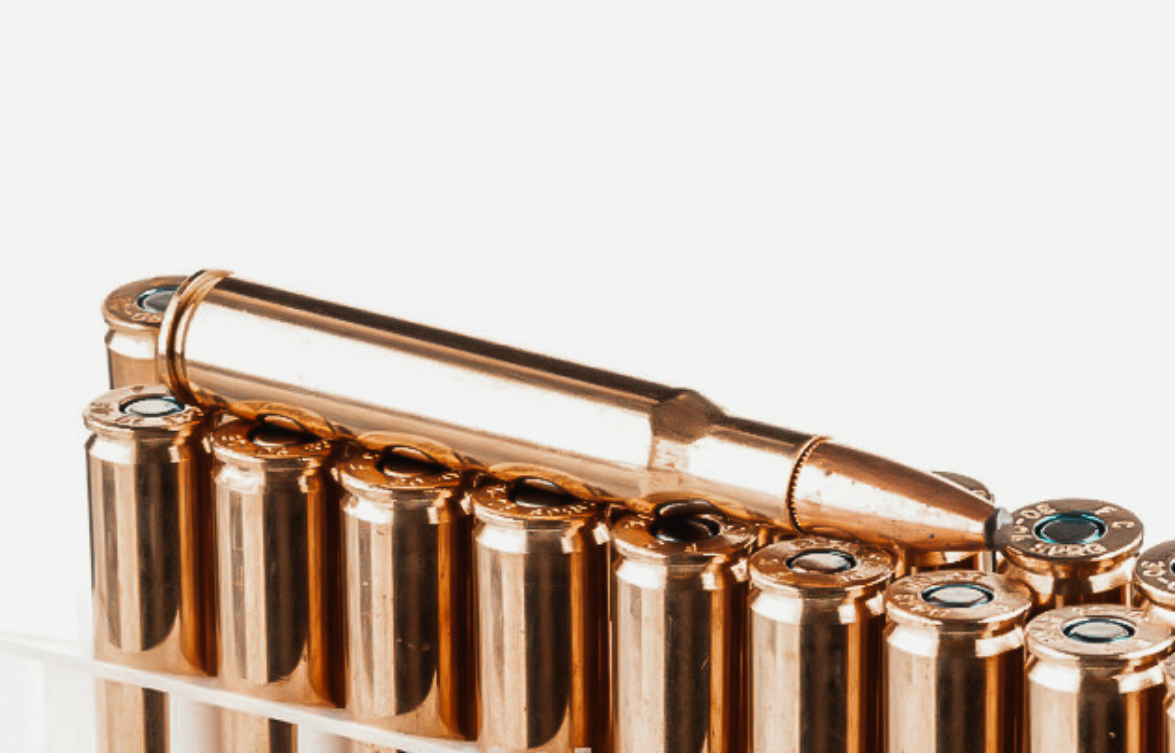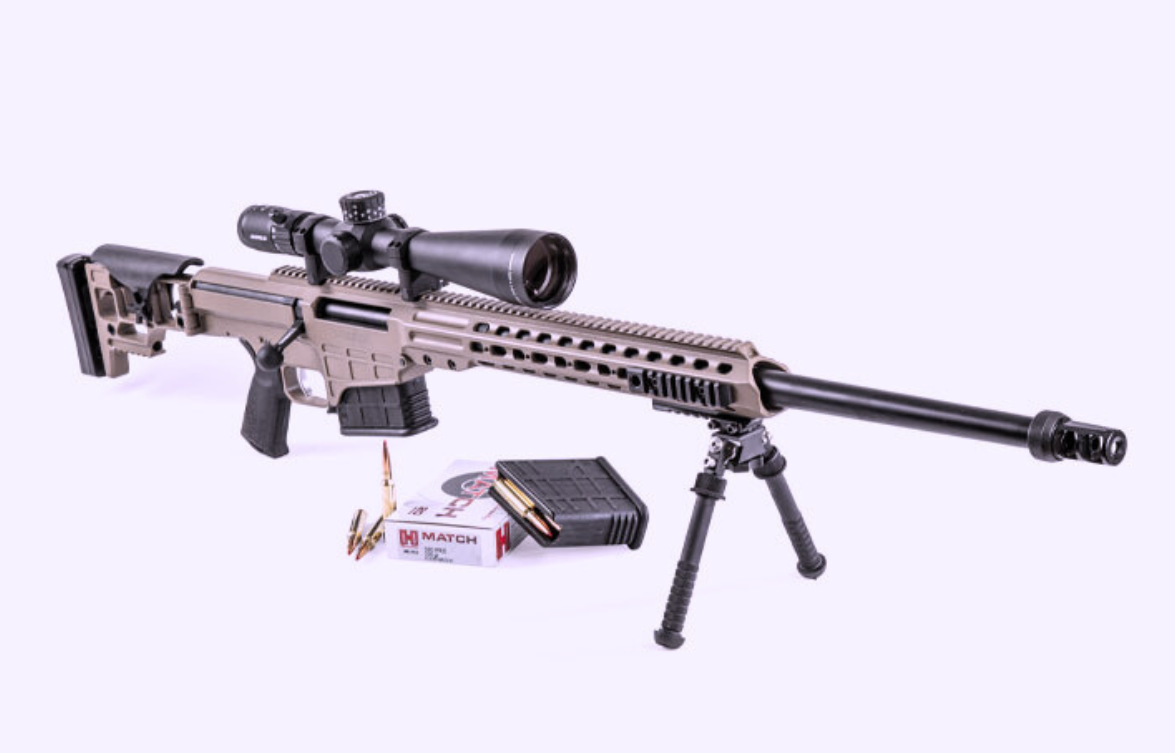300 Norma vs. 300 PRC: Dominating Distance With .30 Caliber Cartridges
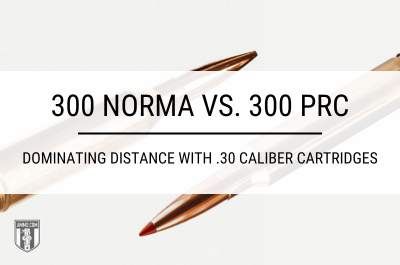
Pushing the limits of .30 caliber bullets is what the 300 Norma Magnum and 300 Precision Rifle Cartridge (PRC) were designed to do. If you want to dominate the distances, you’re in the right place comparing and contrasting the 300 Norma vs. 300 PRC.
By the end of the article, you’ll know which cartridge is better for your shooting needs based on recoil, trajectory, cost, and several other factors.
300 Norma Compared to the 300 PRC
We should expect many similarities between these two cartridges. Both are designed for long-distance shooting competitions and are loaded with identical (or similar) bullets.
But as we’ll soon see, a few significant differences make one cartridge better than the other.
Let’s start with the cartridge specifications to see how similar these rounds are and the subtle differences that significantly impact either one's performance at the range.
Cartridge Specs
As expected, these .30 caliber magnum cartridges have similar specifications, but we should pay close attention to the minute variations.
The 300 Norma Mag is based on the .338 Norma Magnum, whereas the 300 PRC is based on the .375 Ruger.
Both fire bullets with a diameter of 0.308. The neck diameter of each round only varies slightly (0.342 in for the 300 Norma Mag; 0.341 in for the 300 PRC).
The difference in base diameter is a critical distinction between the two. The 300 Norma has a base diameter of 0.585, meaning it needs a larger bolt face than what's commonly used in hunting rifles. However, the 300 PRC has a base diameter of 0.532 in. It doesn’t need the larger bolt face, so it’s much simpler to transition a hunting rifle to the 300 PRC cartridge from traditional hunting cartridges, such as the 300 Winchester Magnum.
The 300 PRC has a longer case length (2.58 in vs. 2.493 in) and overall length (3.7 in vs. 3.618 in) than the 300 Norma Mag. The 300 Norma Mag has a larger case capacity (104.2 grains H2O vs. 77 grains H2O).
Lastly, the 300 Norma Mag's maximum pressure (63,817 psi) is less than that of the 300 PRC (65,000 psi).
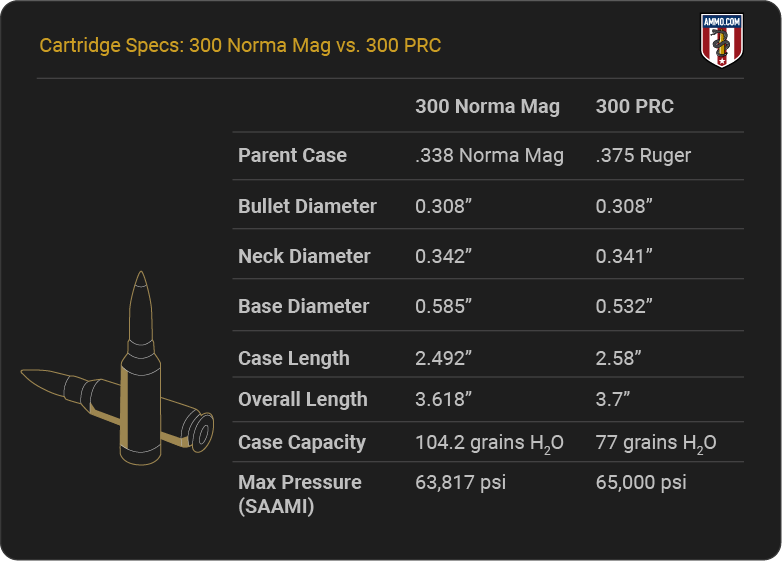
Now, let’s see how these variations in cartridge specifications affect the real-world performance of each cartridge, starting with the amount of recoil each one creates.
Recoil: 300 Norma vs. 300 PRC
Felt recoil is the energy (kick) a shooter feels when they pull the trigger of a firearm. Several factors determine felt recoil, such as gun weight, the shooter, and bullet weight. Felt recoil is a fickle term as it varies from shooter to shooter. In contrast, actual recoil is a scientific measurement of the force (ft-lbs of energy) a specific round generates in a particular firearm.
Shooters often prefer less recoil (yes, I know the macho men claim they don’t care about recoil, but we all know the truth). That's why you'll regularly see a muzzle brake on a precision rifle, which reduces the recoil as much as possible without sacrificing the bullet's effectiveness.
A cartridge with lower recoil is easier to handle and tends to be more accurate. It's also more enjoyable to fire because you don't have a sore shoulder after a few rounds downrange.
The 300 Norma Mag typically has recoil energy of about 25.9 ft-lbs. When the bullet's muzzle velocity or weight increases, that energy can skyrocket to as much as 35.5 ft-lbs.
The 300 PRC typically has around 22 ft-lbs of recoil energy when firing a 225 grain Hornady ELD Match (ELD-M) out of a Barrett MRAD bolt-action rifle weighing 14.5 pounds.
The 300 PRC wins this section because it imparts lower recoil onto the shooter's shoulder.
Trajectory
The trajectory is the bullet's flight path to the target measured in inches of bullet drop. Due to gravity, it’s an arch. Long-range shooters prefer a flat-shooting round. The flatter the trajectory, the easier it is to be accurate at long distances since you don't have to compensate as much for bullet drop.
Both cartridges have a flat trajectory because they’re designed for long-range target shooting. But which is the flatter?
When sighted in at 200 yards, a 300 Norma Mag 215 grain Berger bullet drops around -610.5 inches at 1,500 yards, whereas a 300 PRC 225 grain Hornady ELD-M has a bullet drop of -776 inches at 1,500 yards.
In most instances, the 300 Norma Magnum will have a flatter trajectory than the 300 PRC. The 300NM wins this section.
Accuracy: 300 PRC vs. 300 Norma Mag
Accuracy is another fickle term that’s not quantifiable. It depends on the rifle, bullet, shooter, and shooting conditions. To add to the madness, it’s also affected by recoil and trajectory.
Both cartridges are ridiculously accurate (sub-MOA results at 100 yards are expected), so this section is a tie because it will ultimately come down to the shooter. If you’re a bit recoil-sensitive, you’ll likely be more accurate with the 300 PRC. If you don’t mind a little more recoil, then the flatter trajectory of the 300NM will benefit you more.
Ballistic Coefficient
Ballistic coefficient (BC) measures how well a bullet resists wind drift and slices through the air. Put another way, it’s a numeric representation of a projectile's aerodynamic capabilities. A high BC is preferred because the bullet will cut through the air more efficiently.
Generally, a longer, heavier bullet will have a higher BC as it takes more force to move the flight path of a heavier projectile than a lighter one.
Since both cartridges fire a .30 caliber projectile in similar weights, we should expect similar ballistic coefficients. For example, a Hornady 300 PRC 250 grain A-Tip Match has a high ballistic coefficient of 0.878. The Barnes 245 grain Extreme Outer Limits (EOL) has a BC of 0.807.
A 300 Norma Mag 230 grain Berger Hybrid OTM Tactical has a G1 BC of 0.717. The Norma 230 grain Hybrid Target has a BC of 0.743.
Because the 300 PRC takes advantage of heavier projectiles, its bullets can have a higher BC than the lighter 300 Norma Mag bullets.
The 300 PRC narrowly wins this section.
Stopping Power: 300 Norma vs. 300 PRC
For long-distance target shooting, stopping power doesn’t matter. On top of that, stopping power is a nearly impossible term to define. Does it mean penetration, hole size, amount of damage created to vital organs, energy transferred to the target, or all of the above?
I would argue it’s a combination of everything, but stopping power doesn’t matter as much as proper shot placement for long-range hunting. A poorly placed shot in the foot with a more powerful round is less effective than a well-placed shot to the vitals with a less powerful round.
Both cartridges do not lack stopping power and are more than capable of taking nearly any big game animal in the USA. The 300 PRC and 300 Norma Mag carry enough energy downrange (500+ yards) to kill big game animals ethically.
However, the 300 Norma will generally have more stopping power than the 300 PRC, so it wins this section.
Hunting

Though these cartridges were designed for long-range shooting, they’ve also found a place in the hands of big game hunters in the field. While the 300 Norma Mag has some ballistic advantage, it has a significant downside that many hunters can’t look past. The rifles aren’t readily available, are more expensive, and are generally heavier than 300 PRC rifles.
Both cartridges are overkill for predator hunting, so they’re primarily limited to long-range big-game hunting, where you’re lugging the rifle up and down mountains. I don’t know about you, but I sure don’t want to lug a heavy gun around all day while hunting.
The 300 PRC narrowly wins this section.
Home Defense: 300 PRC vs. 300 Norma
I rarely recommend using a rifle cartridge for self-defense (although 5.56 NATO and 300 BLK are decent options), but I especially don’t recommend these two long-action magnum cartridges. The probability of over-penetration is way too high, endangering your family and neighbors, plus bolt-action rifles are much too slow to operate in a high-pressure situation such as a home invasion. They’re also incredibly loud at the range; forget about firing them inside, as that’s a one-way ticket to deafness.
However, if you don’t own a shotgun or pistol and must choose between the 300 PRC and 300 Norma Mag, go with the 300 PRC, as it’s slightly less powerful (endangering fewer people) and has less recoil (making follow-up shots slightly more manageable).
This section is a tie, as I don’t recommend either cartridge for home defense.
Cost & Availability
I’ll keep this short since we’ve already touched on pricing and availability. The 300 PRC has more reasonably priced rifle and ammo options. While some 300 PRC rifles, like the Ruger Precision, cost a couple of thousand dollars, you can find others, like the CVA Cascade XT, for less than one thousand dollars. A “cheap” 300 Norma Magnum rifle will likely cost you several thousand dollars.
There are also more options for 300 PRC ammo, which lowers the price per round and makes it easier to find.
The 300 PRC wins this section.
Reloading
Handloading and reloading rounds will save money on ammo in the long run, but it costs more initially, as you must purchase all the reloading equipment and supplies.
You won’t have much of a choice for serious shooters if you want to outperform factory ammo. Factory loads are great for hunting, but when shooting competitively, you’ll need every advantage you can get, and you can fine-tune each round to perform perfectly out of your rifle when handloading.
Both cartridges can be reloaded, so this section is a tie.
300 Norma vs. 300 PRC Ballistics
We’re finally at the portion of the article all the data lovers have been searching for: the ballistics charts! The team at Ammo.com has gathered the ballistics of each cartridge into easy-to-read charts so you can quickly compare them.
300 Norma Ballistics Charts
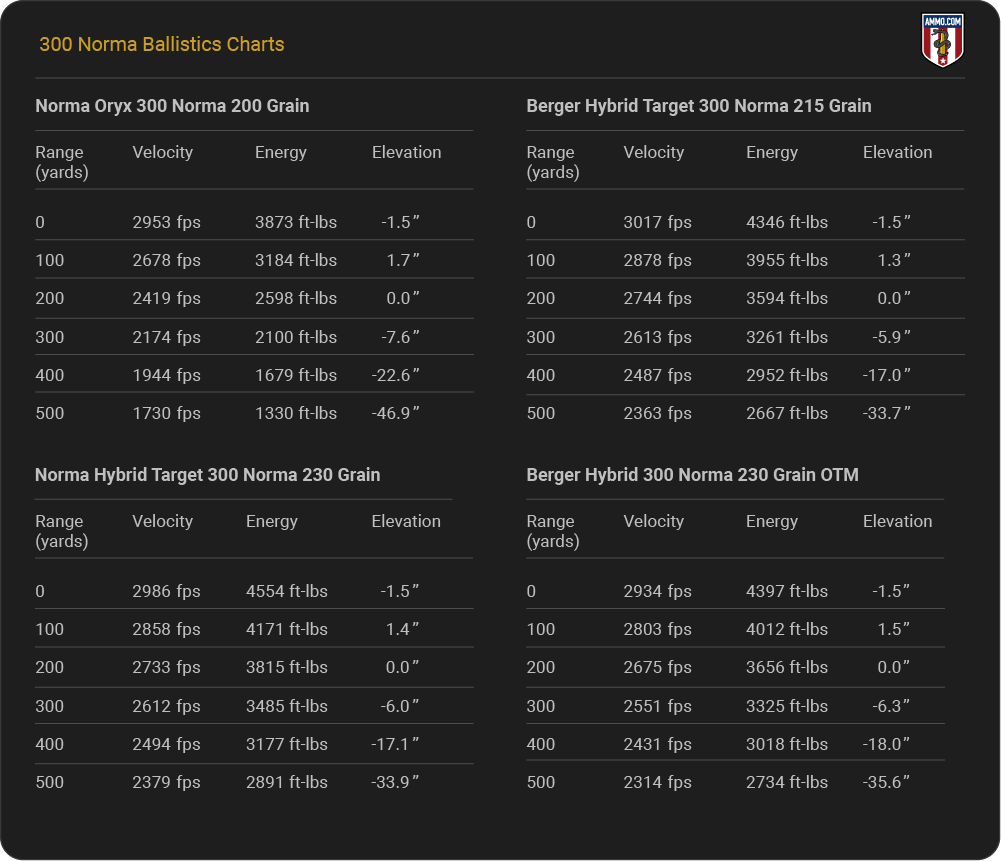
300 PRC Ballistics Charts
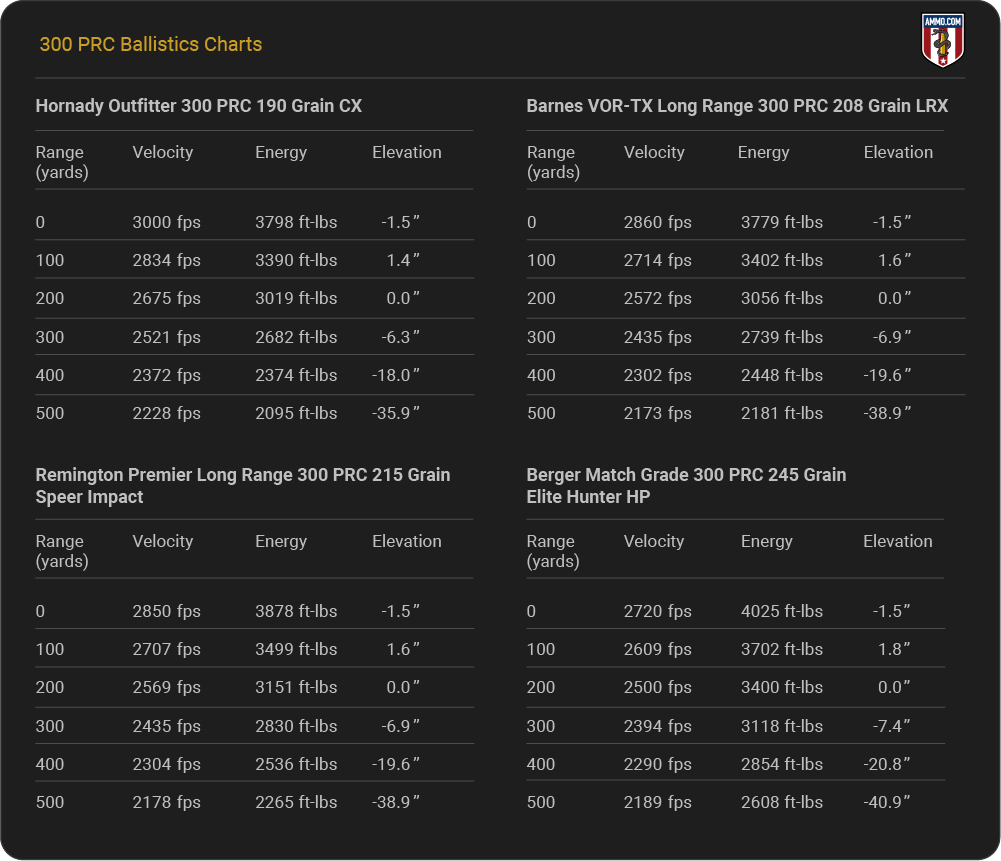
If you just can’t get enough of 300 PRC ballistics, check out our in-depth article!
300 Norma Brief History
The 300 Norma Magnum is a relatively new cartridge released in 2012 by Norma Ammunition. The .338 Norma Magnum (a wildcat cartridge of the 338 Lapua Magnum) is its parent cartridge necked down to accept .30 caliber bullets.
Upon its release, it quickly gained popularity as a top contender in competitive long-distance rifle shooting circles. Then, the United States Special Operations Command (SOCOM) picked the MK22 Advanced Sniper Rifle chambered in 300 Norma Magnum as one of its primary sniper rifles, ensuring this cartridge would be around for many years.
300 PRC Brief History
Introduced by Hornady in 2018, the 300 Precision Rifle Cartridge (PRC) is a modern long-range cartridge designed to excel in big-game hunting and precision shooting.
It has incredible accuracy and consistent performance at extended ranges, quickly becoming a favorite among long-distance target shooters and hunters. It maximizes ballistic efficiency, offers superior energy retention, and resists wind drift, making it ideal for ethically harvesting elk, moose, and other big game at extended distances.
With growing military interest and popularity among competitive shooting circuits, the 300 PRC continues to establish itself as a top option for serious marksmen.
Frequently Asked Questions
The team at Ammo.com has gathered and answered some of the commonly asked questions regarding the 300 Norma Mag vs. 300 PRC.
What is the difference between 300 PRC and 300 Norma?
The difference between the 300 PRC and 300 Norma is that the 300 Norma offers better ballistic performance, especially at extended ranges, but the 300 PRC has less recoil and is more versatile.
How far can a 300 Norma Mag shoot?
A 300 Norma Mag can shoot over 2,000 yards.
What is the max effective range of a 300 Norma Mag?
The max effective range of a 300 Norma Mag is over 2,000 yards for target shooting.
How far does a 300 Norma Mag drop at 500 yards?
A 300 Norma Mag will drop 20 to 25 inches at 500 yards, depending on the exact round you’re firing.
Parting Shots: 300 Norma vs. 300 PRC
Congrats! You've reached the end of the 300 Norma vs. 300 PRC article, and it’s time to tally the results of each section.
The 300 Norma Mag won two sections (trajectory and stopping power). Three sections were a tie (accuracy, home defense, and reloadability). The 300 PRC won four sections (recoil, BC, hunting, and cost/availability).
Since the 300 PRC won most of the sections, it will be the best bet for most shooters. But for the shooters looking to ring steel a mile away, the 300 Norma Magnum will be a better option.
Regardless of your cartridge, check out our large selection of reasonably priced ammo at Ammo.com!
Ammo Comparisons
- .308 vs 5.56
- 6.5 Creedmoor vs .308
- .300 Blackout vs .308
- .300 Win Mag vs .308
- .243 vs .308
- .308 vs .30-06
- 7mm-08 vs .308
- .270 vs .308
- 7.62x39 vs .308
- .223 vs .308
- .338 Lapua vs .308
- .380 ACP vs 9mm
- .223 vs 5.56
- .300 Blackout vs 5.56
- 9mm vs 45 ACP
- 9mm vs 40 S&W
- .357 SIG vs 9mm
- 10mm vs 9mm
- 9mm vs 9mm Luger
- .243 vs .270
- .300 Win Mag vs .30-06
- .270 vs .30-06
- .40 vs .45
- 38 Special vs 357
- 9mm vs 40 vs 45
- 5.56 vs 7.62x39
- 338 Lapua vs .30-06
- .30-30 vs .30-06
- 300 PRC vs 338 Lapua
- .30-06 vs 7mm
- 300 Win Mag vs 338 Lapua
- 300 PRC vs 300 Win Mag
- 300 WSM vs 300 Win Mag
- 338 Win Mag vs 338 Lapua
- 12 Gauge vs 20 Gauge
- 10mm vs 357 Mag
- .30-30 vs 7.62x39
- 224 Valkyrie vs 22-250
- 17 HMR vs 22 Mag
- 7.62x39 vs .300 Blackout
- 45 ACP vs 45 Auto
- 45-70 vs 30-30
- 300 Blackout vs 223
- 357 Magnum vs 9mm
- 350 Legend vs 300 Blackout
- 224 Valkyrie vs 223
- 45 ACP vs 38 Super
- 6.5 Grendel vs .308
- 17 HMR vs 22 LR
- 10 Gauge vs 12 Gauge
- 22-250 vs 223
- 45 Colt vs 45 ACP
- 350 Legend vs 30-30
- 5.7x28 vs 223
- 5.7 vs 9mm
- 5.56 vs 5.7
- 22 vs 9mm
- Buckshot vs Birdshot
- 450 Bushmaster vs 308
- 450 Bushmaster vs 223
- Buckshot vs Slug
- 6.5 Grendel vs 5.56 vs 223
- 6mm ARC vs 6.5 Grendel
- 44 vs 45
- 458 SOCOM vs 5.56
- 357 vs 44
- 32 ACP vs 380
- 300 Win Mag vs 338 Win Mag vs 338 Lapua Mag
- 450 Bushmaster vs 458 SOCOM vs 50 Beowulf
- 6mm Creedmoor vs 6.5 Creedmoor
- TMJ vs FMJ
- 44 Special Vs 44 Magnum
- 45 90 vs 45 70
- 6.8 Western vs 6.8 SPC
- 50 Beowulf vs 50 BMG
- 26 Nosler vs 6.5 PRC
- 28 Gauge vs 410
- 6.8 SPC vs 5.56
- 6.8 SPC vs 6.5 Grendel
- 6.8 Western vs 7mm Rem Mag vs .28 Nosler
- 6.8 Western vs 6.5 Creedmoor
- 22 Hornet vs 223
- 6.8 Western vs 6.5 PRC
- .410 vs 12 Gauge
- .410 vs 20 Gauge
- 22 LR vs 22 Mag
- 6mm ARC vs 243
- 7mm-08 vs 270
- 243 vs 6.5 Creedmoor
- Nickel vs Brass Casing
- 204 Ruger vs 223
- 50 Beowulf vs 5.56
- 260 Remington vs 6.5 Creedmoor
- 6mm Remington vs 243
- 28 Nosler vs 300 PRC
- 50 Beowulf vs 50 AE
- 22 Nosler vs 22-250
- 450 Marlin vs 45-70
- 300 Win Mag vs 300 Norma
- 458 SOCOM vs 300 Blackout
- 38-55 vs 45-70
- 22 Hornet vs 22 LR
- 300 Norma vs 338 Lapua
- 338 Lapua vs 50 BMG
- 28 Nosler vs 300 Win Mag
- 28 Nosler vs 6.5 Creedmoor
- 204 vs 22-250
- 458 SOCOM vs 45 70
- 44 40 vs 45 70
- 6.8 SPC vs 6.5 Creedmoor
- 450 Bushmaster vs 30-06
- 7mm Rem Mag vs 300 Win Mag
- 30 Carbine vs 223
- 25-06 vs 30-06
- 26 Nosler vs 28 Nosler
- 16ga vs 12ga
- 30 06 vs 7.62 x54R
- 9mm Makarov vs 9mm Luger
- 350 Legend vs 223
- 30 Carbine vs 5.56
- 6.5x55 vs 6.5 Creedmoor
- 6.5 Creedmoor vs 270 vs 25-06
- M193 vs M855
- 450 Bushmaster vs 458 SOCOM
- 6.5 Grendel vs 6.5 Creedmoor
- 350 Legend vs 5.56
- .277 Fury vs 6.8 SPC
- 277 Fury vs 300 Win Mag
- 10mm vs .45 ACP
- 277 Fury vs 223
- 6.8 SPC vs 300 Blackout
- 6.5 PRC vs 6.5 Creedmoor
- 277 Fury vs 308
- 277 Fury vs 6.5 Creedmoor
- 350 Legend vs 450 Bushmaster
- 277 Fury Vs 5.56 NATO
- 10mm vs 40S&W
- 32 ACP vs 9mm
- 32 Special vs 9mm
- 8.6 Blackout vs 300 Blackout
- 30 Super Carry vs. 9mm
- 5.56 vs 9mm
- .50 Action Express vs 9mm
- 7.62x25 vs. 9mm
- 10mm vs 44 Magnum
- 300 Blackout vs 300 Win Mag
- 6.5 Grendel vs 300 Blackout
- 460 Rowland vs 10mm
- 300 RUM vs 300 PRC
- 300 Norma vs 300 PRC
- 45 GAP vs 45 ACP
- 7mm PRC vs 300 Win Mag
- 300 PRC vs 6.5 Creedmoor
- 300 PRC vs 308
- 357 SIG vs 357 Mag
- 7.62x39 vs 7.62x51
- 243 Win vs 223 Rem
- 30 Nosler vs 300 PRC
- 6.5 Creedmoor vs. 30-06 Springfield
- 450 S&W vs. 44 Magnum
- 6.5 Creedmoor vs. 300 Win Mag
- 454 Cassull vs. 45-70 Govt
- 454 Cassull vs. 44 Mag
- 7.62x54r vs. 308 Winchester
- 22 ARC vs. 223 Rem
- Subsonic vs. Supersonic Ammo
